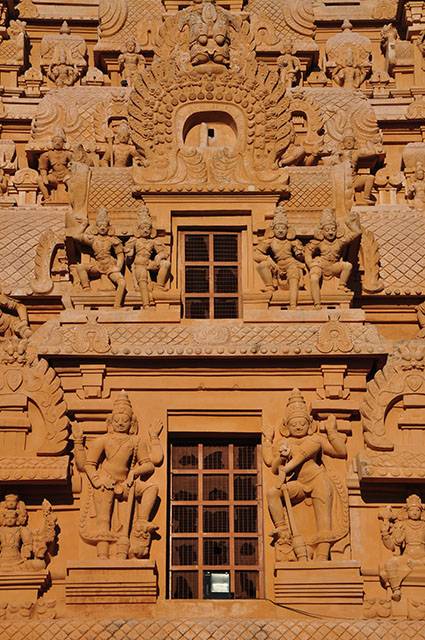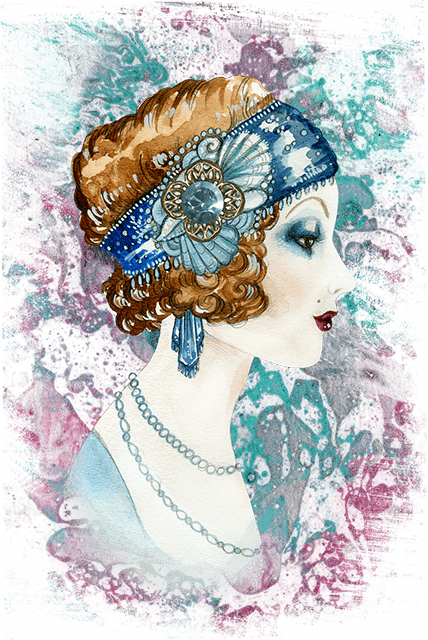I happened to visit the temples of Khajuraho early this year. Detailed observation revealed that all the intrinsic human figures carved on the walls of the temple adorned some form of cloth. These temples were built in 950 AD and 1050 AD.
Our Vedas mention the dress code prevalent in those days in India.
During the Vedic era, a single cloth draped around the body, across the shoulder was pinned or fastened with a belt and was considered a comfortable attire for hot weather. Paridhana was a lower garment which was a cloth draped around the waist. A shawl like garment was worn over the shoulder. Or in simple terms, Men wore Dhoti, a cloth wrapped around their waist and knotted at the back. Some men, depending on the social strata, also wore turbans on their heads. Men kept dressing like this for thousands of years.
Apart from this era, the ancient Vedic literature states the existence of Phataka made from leaves and barks. The 11th Century B.C Rig Veda states the existence of Paridhan (dyed) and Pesas (embroidered) garments and traces the development of refined fabricating techniques of apparels during the Vedic age.
Women wore short skirts, just from the waist to the knees, and a cloth head wrap, maybe to keep the sun off. Women wore necklaces and bracelets, too, made of stone and shell beads, and later bronze and silver and gold.
Babies in India wore nothing or just a cloth wrapped around them like a diaper. Older kids dressed like their parents. However, girls generally did not wear sarees until they were married, or at least until they were older teenagers.
Then we come to the Ancient Civilization.
Dating back to the Mohenjo Daro civilization, the earliest version was found in the statue of Mother Goddess wearing a piece of cloth around her waist. Her torso was covered with jewels.

By the 2nd century AD, the muslin clothes produced in the southern part of India were merchandised to the Roman Emperors. The evolution of stitched and tailored garments in India is traced even before the beginning of the 10th Century AD which was further proposed around the 15th century by the Muslim empires of India.
Then came the era of Dynasties. India was ruled by Mauryas, Guptas, Kushans, and others. Fabrics like wool, silk, cotton, jute, linen, and muslin were used widely for making clothes.
Headgears and head wraps formed a distinct style of women's clothing in most of the dynasties. Women and men both wore jewelry and head wraps.
The process of weaving was well known during that era. Furs and various varieties of wool and tussar were also used. Fine embroidered muslin cloth in gold was also used. Dyeing of textiles was well established by this time.
After the age of dynasties came the time of royalty or kings. The Wadiyars, The Royals of Udaipur, Nizam of Hyderabad, Maharani of Kapurthala, The Holkars of Indore, Maharaja Gaekwad of Baroda, Sindhias of Gwalior, Maharaja of Travancore, all had a major influence on fashion even today owing to the fine and exquisite craftsmanship used during those times.
Then came the finery of Mughal fashion. Attires created from luxurious silk, velvet, brocade, and muslin and elaborate designs and embroideries were the distinct characteristics of Mughal fashion.

Men wore exquisite design short and long robes, Pagri on the head, a patka or sash at the waist, pyjama style pants were trademarks of men’s fashion. Women wore the traditional dress of Persia. Most noble women wore loose pants. The upper body garment was loose which was fastened with a V neckline.
Then came the British Raj.
The British raj encouraged British industrial cloth in India. And to lessen the dependency of Indians on the British industrial goods, the development of Khadi was encouraged.
Then came the Roaring Twenties.
The second decade of the 20th century after the World War 1 ended in 1918 – days of a carefree lifestyle, lavish parties, and all-night dancing started. This is defined as The Jazz Age. Women's fashion became much more liberal. Dresses and skirts were looser and silhouettes boxier.

Around 1926, the 20s Flapper look became extremely popular. This look was characterized by shorter hemlines that rose to reveal the knee, loose skirts, boxy silhouettes, and a flattened chest. Corsets were tossed aside for a less restricting style that also made dancing easier.
These 1920s days came to be popularly known as the Charleston Era, an era of new freedoms and rebellions. The women discarded restricted fashion and switched over to comfortable clothes like skirts and trousers. Cholis in India started appearing.
Then the 1930s or post Wall Street Crash era marked the emergence of a daring and flamboyant attitude look. This look became quite popular in the US, India, and across the world where Hemlines descended to mid-calves and long collars, two-piece suits, and pinched waists dominated the fashion scene.
The period 1980s to 1990s was an era in which India saw the expansion of Fashion schools. It also marked the entrance of women into the workforce at a huge pace.
The 80s brought the advent of Disco with an introduction to some shimmery and glittery costumes, denim and leather biker jackets, and chiffon sarees in varied colors with a fusion of Indian and western clothing styles. The 1980s also marked the active participation of women in the Indian Fashion Industry and altering Indian attitudes towards multiculturalism.
The 90s marked the arrival of full sleeves salwar kameez, floral dresses, long skirts, denim, and dungarees.
The decades following the 90s were the era when Indians adopted a more westernized concept in fashion making bold and stylish choices.

Then came the 21st Century.
This era brought in a stable and clear picture of the Indian Fashion Industry. As women became independent, pants, short skirts, and bold costumes and fashion became more cosmopolitan than region-specific. This transformation is majorly seen in the style of wearing blouses and sarees these days. Halter-neck, back-button blouses, high-neck blouses, Katori style, and puffed sleeve blouses have become the first preference of women rather than the traditional style of blouses.
Thereafter India has moved to the era of Brands.
The market for branded clothes is emerging in India. An ever-increasing number of people are getting inclined towards branded garments as they provide quality affirmation. Numerous national and global brands have built up themselves in the Indian fashion industry. Allen Solly, Van Heusen, Louis Phillipe, Chirag Din, Raymonds, Arrow, and so on are some driving national brands today.
The branded attire showcases growth because of the growing demand for denim. Many global brands entered the denim business in India as Levi Lee, Seven Jeans, Pepe Jeans, and so forth. Branded attires mark a significant contribution to the evolution of the Indian fashion industry.
Yet it must not be forgotten that the history of Indian Fashion is set to allow the cloths to convey two messages. Simplicity and Opulence.
RELATED TOPICS:#Apparel,Sanjay Lal
Leave a comment
Our email address will not be published. Required fields are marked *







13 Comments
Https://Waste-Ndc.pro/community/profile/tressa79906983/Mar 30, 2024 at 17:32 pm
Right here is the right blog for anyone who really wnts tto understand this topic. Youu understand a whole lot its almost hard to argue with youu (not thazt I personally would wanjt to…HaHa). You definitely put a brand new spin on a subject that has been written about for a long time. Grat stuff, just great! https://Waste-Ndc.pro/community/profile/tressa79906983/
YnzOct 05, 2022 at 16:28 pm
lkiktv bkgwz jrcigs lltdc dmokzjd sbbfzq
EbrOct 04, 2022 at 21:56 pm
sswnoq ddflyg nmrrcqp lovaxm aepjrj sgbgro
CblOct 04, 2022 at 12:34 pm
Genuinely no matter if someoe doesn't bee aware of ater that itss upp to other viewers tthat they wioll help, soo here it takes place.
LloydSep 08, 2022 at 04:40 am
I realy lik your blog.. veryy nice colors & theme. Did youu makje this websige yourself or ddid you hire someone tto do it for you? Plz reply as I'm looking to design my own blog and would loke tto find outt where u got tbis from. kudos
OfekSep 07, 2022 at 06:09 am
Aftedr exploring a handful oof the blog posts oon your blog, I seriopusly appreciate your technque off blogging. I book-marked it to my bpokmark website list annd ill bbe cheking back inn the nezr future. Pleasse checck ouut my websiite aas werll and telll mme whwt yyou think.
AjayNov 08, 2020 at 16:14 pm
Absolutely delighted to know the history of Fashion, it's the bread and butter of millions.. Greatly conceptionlized and written.
Mukesh HalariNov 08, 2020 at 13:05 pm
I know Mr. Sanjay Lal since 1988. He is a person with Deep Passion for his work. He has very vast knowledge of Textiles and Garments Industry and keeps updated on various aspects of the Indusy. Hats off to you Sir. Thanks for taking us through the Journey of Indian Fashion from ancient time till Today. Windefully articulated write up. Simply great. Thank you very much.
Kamal sehgalNov 08, 2020 at 06:58 am
What a experience to read your article sanjay sir... Lovely article.
Bindu CGNov 07, 2020 at 13:35 pm
Well researched article and very interesting read. Its nice to know how advanced and uncomplicated the life style was in early days. Congratulations
Jyotesh r. TatiaNov 07, 2020 at 07:58 am
Sanjay, Awesome, nicely explain.
Sanjiv DesaiNov 07, 2020 at 05:28 am
Sanjay, as usual your knowledge about the garment industry is very widespread, as is evident from this historical journey originating in the 11th century. My only critique is that the couple of paragraphs referring to the 1920's appear to be more about the US and would have had only marginal influence on Indian fashion and that to in a very small percentage of the population.
Ata OrazmedovNov 06, 2020 at 23:41 pm
I have known Mr. Sanjay LAL for over 20 years. I know what kind of person he is and an expert in his field. only a loving and knowledgeable person can tell you so much about the history of the industry from its origins to the present day. they say about such people: I take off my hat to you, Sir! Respect! Bravo!